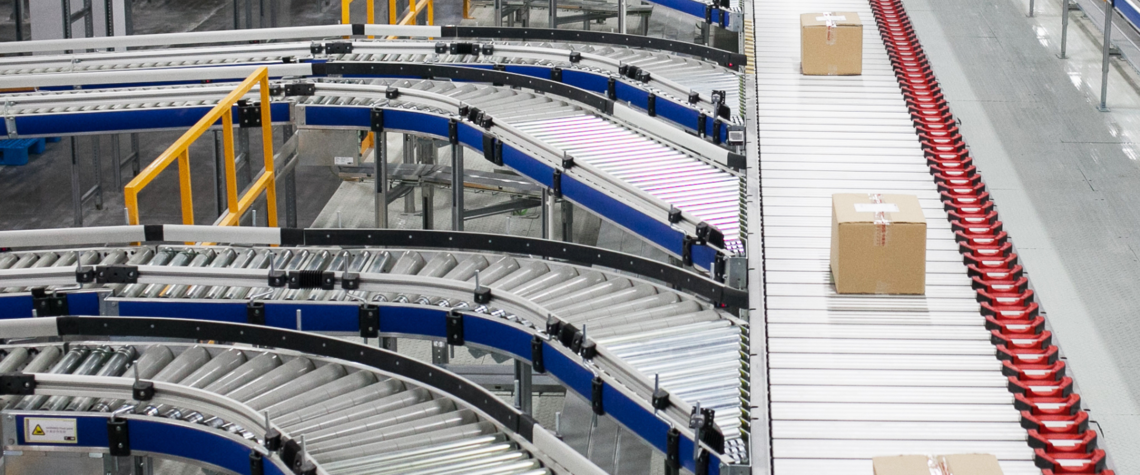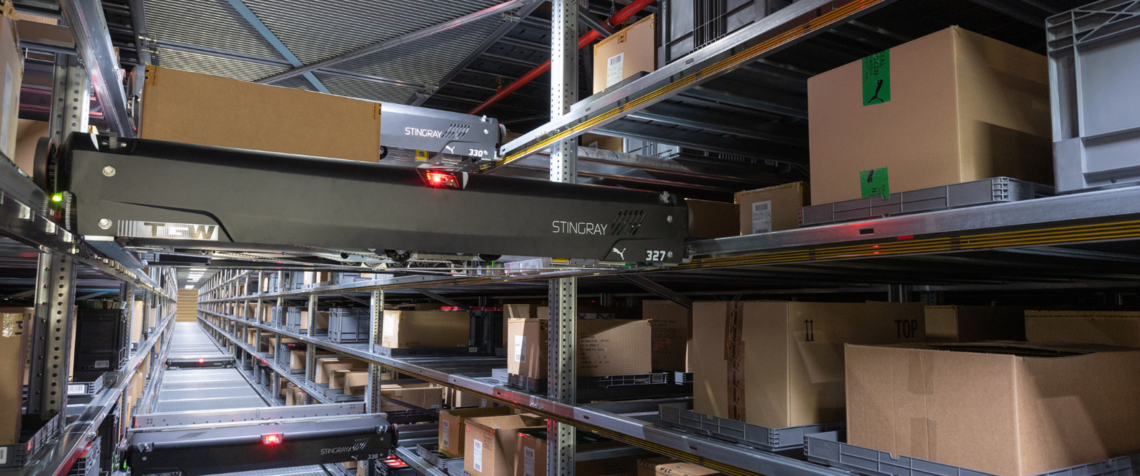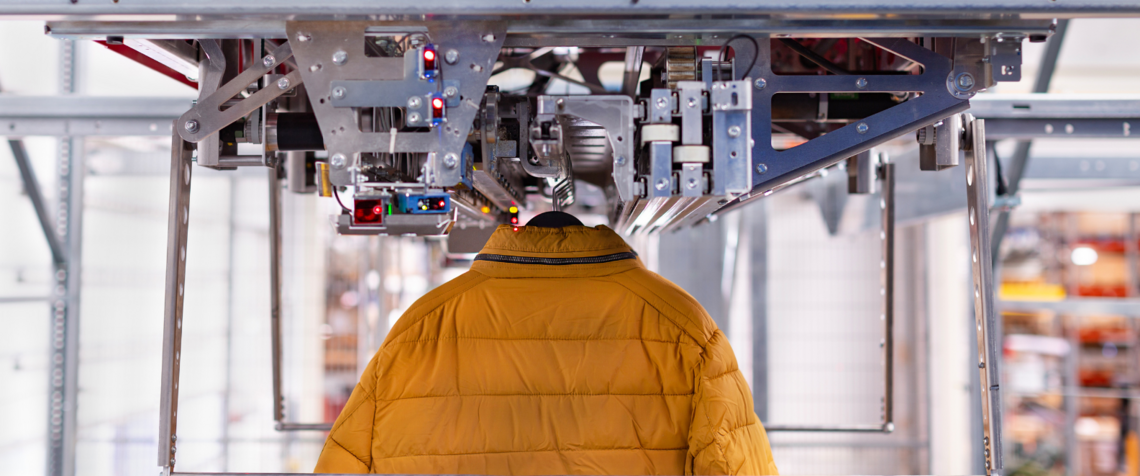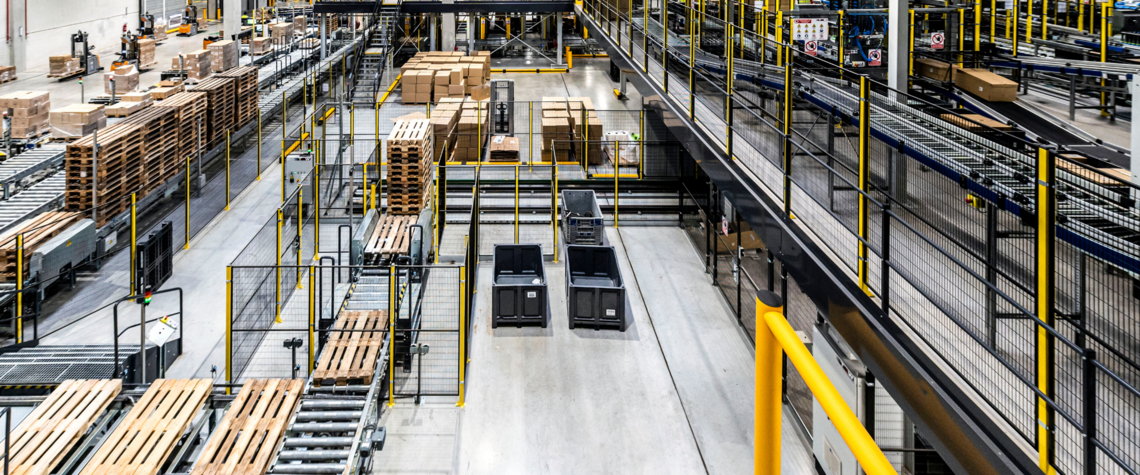

With all its convenience and speed, online shopping still presents a challenge for consumers—they can't see, touch, feel, or try a product before they buy it. That’s why returns are so common and why handling them has become an essential function of consumer goods and retail logistics. Many companies work with a third-party logistics partner that providers warehouse automation to accommodate the high volume of returns.
Based on data from 60 of the top 100 US retailers, approximately $685 billion worth of merchandise was returned in 2024. Over half of these involved the customer either purchasing online and returning in-store or purchasing online and returning online. This generates significant operational costs along the supply chain and puts additional strain on a company’s fulfillment speed.
Reverse logistics, the process of managing returns and filtering products back into the supply chain, involves many moving parts. Like inbound logistics, it requires a comprehensive strategy combined with the right technology. Without these, you risk compromising your fulfillment process, straining your workforce, and increasing your operational costs.
The Pitfalls of Manual Returns Processing
Speed and efficiency is vital to the success of ecommerce and omni channel fulfillment. Meeting modern consumer expectations requires warehouse automation that supports fast and efficient material handling. But you must also embrace automated returns or you risk disrupting your entire supply chain, from inbound logistics to outbound shipping.
Manual returns processing doesn’t make sense anymore, especially in the retail space. Relying on physical labor presents too many challenges and quickly becomes an operational liability.
Quality control is an essential part of returns processing. Each item that reenters your facility must be inspected for damage, missing components, or product defects to determine whether it can be resold. Inspections also help spot and prevent fraudulent returns.
Performing these tasks manually is tedious and time-consuming, increasing the chance of operational bottlenecks during peak seasons. In addition, the repetitive (and often dull) nature of manually receiving and inspecting returned goods contributes to burnout and higher turnover rates.
To ensure efficient and cost-effective inventory management, each returned product should be scanned back into your facility’s inventory. Undamaged items must then get reshelved to await redistribution.
Although companies typically use barcode scanners and computers to manually track returns, the process is still labor-intensive. Manually reshelving returned items adds another layer of physical labor to the process, especially when handling large items.
Relying on employees to facilitate returns processing leaves the door open to mistakes. Workers may accidentally reshelve damaged items, forget to enter a product into the inventory system, or fail to identify a fraudulent return.
These simple mistakes may increase operating costs and disrupt your warehouse’s workflow. Human errors can also increase the chance of damaged goods being resold to customers.
Any way you slice it, a manual returns process is costly. The labor alone can eat into a company’s fulfillment budget. Plus, bottlenecks caused by clunky returns may increase operational costs in other areas of the warehouse.
Many retailers respond to this by dumping returned products to avoid extra expenses. This added waste is bad for the environment. It’s also a missed opportunity to resell returned items in the future.


How Warehouse Automation Accelerates Returns Processing
Warehouse returns automation eliminates operational strain and creates a unified workflow of integrated technology. Many of the automated systems that support inbound logistics and throughput also facilitate smooth reverse logistics.
- Conveyor Networks and Shuttle Systems: Automated conveyors move returned items to ergonomic workstations where employees perform quick visual inspections and send products via conveyor and a shuttle system to be restocked based on product type and customer demand.
- Automated Storage and Retrieval Systems (ASRS): Once a returned item is reshelved, an ASRS can quickly retrieve it for a future order and send it to a picking station.
- Automated Returns Processing: Technology like RFID (Radio Frequency Identification) automatically scans returned items into your facility’s inventory, eliminating human error, speeding the returns process, and reducing labor costs.
With these automated solutions at the core of your returns process, you’ll see a measurable uptick in customer satisfaction, a reduction in overall operational costs, and the chance for further sales opportunities. These solutions enable you to create an automated ecosystem that unites inbound logistics, shipping, and reverse logistics for full-scale ecommerce or omni channel success.
The Role of Software in Reverse Logistics
On the backend of any successful automation infrastructure lives a comprehensive Warehouse Management System (WMS) that delivers multi-layered operational software. Not only does automation software support end-to-end product fulfillment, but it also oversees each step in reverse logistics.
While automated equipment facilitates the fast and efficient transport of goods back into your facility, software ensures they get to the right place. Warehouse Execution Software (WES) is a key player during this process. It provides real-time coordination of every task to ensure each automated system remains in lock-step with your facility’s workflow.
Integrating WMS and WES into your reverse logistics operation provides several invaluable benefits.
- Warehouse software tracks the status of returned products in real-time and ensures each item gets reshipped for a future order.
- When products reenter your facility, software decides whether they should be restocked, refurbished, or discarded and routes them to the correct destination.
- Software collects valuable data that enables you to optimize inventory management, anticipate future return volume, and pinpoint bottlenecks.
Whether you’re adding new automated systems to your facility or need more control over existing systems, warehouse software helps optimize reverse logistics for better returns management.


Industry Applications and Success Scenarios
Your company’s reverse logistics operation must function at the same level as its inbound logistics, goods-to-person (GTP), and outbound logistics operations. This is true in any industry that requires product distribution. However, it’s absolutely crucial in the consumer goods, retail, and fashion sectors.
Distributors of consumer goods such as home improvement supplies, electronics, tools, or vehicle parts must manage large inventories consisting of highly varied products. When seasonal demand spikes, so does the number of returns.
Automating the inbound logistics step in the returns process helps speed up product inspection without creating delays. A robust ASRS quickly restocks returned items based on SKUs, strategically storing in-demand products so they can be retrieved and redistributed.
Retail companies can’t rely solely on inbound logistics, GTP, and shipping to meet customers’ expectations. A solid returns process is just as important. One survey revealed that 67% of consumers say a negative return experience would discourage them from purchasing from a company again.
Automation supports omni channel reverse logistics so online and in-store returns don’t disrupt a company’s inventory. Real-time tracking through WMS speeds processing times and ensures products make it back to the correct warehouse or store.
The fashion industry has a higher return rate than any other sector. Automation helps brands optimize their returns process so operational costs don't destroy their bottom line.
When items reenter a facility, computer vision systems quickly inspect clothes to determine if they’re suitable for resale. Conveyor networks then transport items back to the ASRS or to recycling stations for disposal. These systems are crucial during peak seasons, especially Christmas.
TGW Logistics as a Reverse Logistics Partner
Automating your reverse logistics process is the only way to keep up with evolving ecommerce and omni channel consumer demands. If you still rely on manual labor to manage returns, let TGW Logistics create an automation strategy tailored to your industry, infrastructure, and long-term goals.
Our automated solutions and industry-leading software set the foundation for faster, more efficient returns. It’s our goal to make successful reverse logistics possible with solutions designed to reduce operational costs and streamline end-to-end workflow at your facility. We also provide post-automation support after go-live so you get the most out of your systems.
Merge Inbound Logistics, Warehouse Throughput, and Reverse Logistics
Ready to streamline your entire warehouse operation and optimize returns processing? Contact TGW Logistics today.
TGW Logistics is a foundation-owned company headquartered in Austria and a global leader in warehouse automation and warehouse logistics. As a trusted systems integrator with more than 50 years of experience, we deliver end-to-end services: designing, implementing, and maintaining fulfillment centers powered by mechatronics, robotics, and advanced software solutions. With over 4,500 employees spanning Europe, Asia, and North America, we combine expertise, innovation, and a customer-centric dedication to help keep your business growing. With TGW Logistics, it's possible to transform your warehouse logistics into a competitive advantage.

